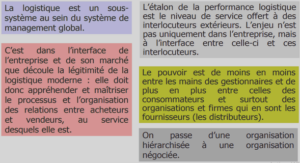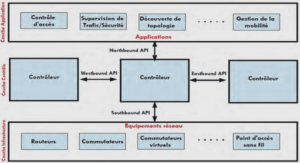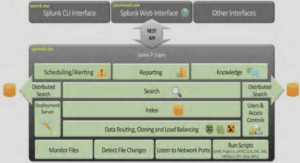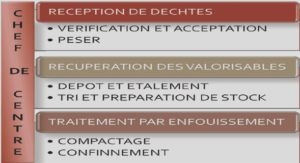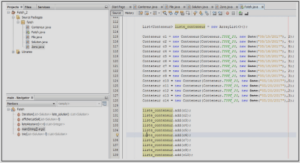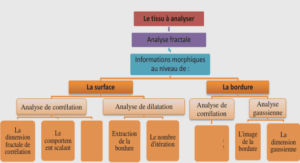Sommaire: Cours wireless application protocol push access protocol specification
1.SCOPE
2.DOCUMENT STATUS
2.1COPYRIGHT NOTICE
2.2ERRATA
2.3COMMENTS
3.REFERENCES
3.1NORMATIVE REFERENCES
3.2 INFORMATIVE REFERENCES
4.DEFINITIONS AND ABBREVIATIONS
4.1DEFINITIONS
4.2ABBREVIATIONS
5.INTRODUCTION
6.OPERATIONS
6.1PUSH SUBMISSION
6.2RESULT NOTIFICATION
6.3PUSH CANCELLATION
6.4STATUS QUERY
6.5CLIENT CAPABILITIES QUERY
7.ADDRESSING
7.1MULTIPLE RECIPIENT ADDRESSING
7.2MULTICAST/BROADCAST ADDRESSES
8.MESSAGE FORMAT
8.1CONTROL ENTITY FORMAT
8.2CONTENT ENTITY FORMAT
8.3CAPABILITIES ENTITY FORMAT
8.4EXAMPLE
9.CONTROL ELEMENTS & ATTRIBUTES
9.1THE PAP ELEMENT
9.2THE PUSH-MESSAGE ELEMENT
9.3THE PUSH-RESPONSE ELEMENT
9.4THE CANCEL-MESSAGE ELEMENT
9.5THE CANCEL-RESPONSE ELEMENT
9.6THE RESULTNOTIFICATION-MESSAGE ELEMENT
9.7THE RESULTNOTIFICATION-RESPONSE ELEMENT
9.8THE STATUSQUERY-MESSAGE ELEMENT
9.9THE STATUSQUERY-RESPONSE ELEMENT
9.10THE CCQ-MESSAGE ELEMENT
9.11THE CCQ-RESPONSE ELEMENT
9.12THE BADMESSAGE-RESPONSE ELEMENT
9.13STATUS CODES
9.14STATUS CODE DEFINITIONS
10.VERSION CONTROL
11.CAPABILITIES NEGOTIATION
12.PAP REFERENCE INFORMATION
12.1DOCUMENT IDENTIFIERS
12.2DOCUMENT TYPE DEFINITION (DTD)
13.EXAMPLES
13.1PUSH-MESSAGE EXAMPLE
14.PUSH ACCESS PROTOCOL OVER HTTP
14.1ADDRESSING
14.2MESSAGE FORMAT
14.3EXAMPLE
14.4MESSAGE RESPONSES
15.STATIC CONFORMANCE REQUIREMENTS
15.1PUSH PROXY GATEWAY FEATURES.
Extrait du cours wireless application protocol push access protocol specification
1. Scope
Wireless Application Protocol (WAP) is a result of continuous work to define an industry wide specification for developing applications that operate over wireless communication networks. The scope for the WAP Forum is to define a set of specifications to be used by service applications. The wireless market is growing very quickly and reaching new customers and providing new services. To enable operators and manufacturers to meet the challenges in advanced services, differentiation, and fast/flexible service creation, WAP defines a set of protocols in transport, session and application layers. For additional information on the WAP architecture, refer to “Wireless Application Protocol Architecture Specification” [WAP].
2. Document Status
This document is available online in the following formats:
PDF format at http://www.wapforum.org/.
2.1 Copyright Notice
© Copyright Wireless Application Forum Ltd, 1999.
Terms and conditions of use are available from the Wireless Application Protocol Forum Ltd. web site at
http://www.wapforum.org/docs/copyright.htm.
2.2 Errata
Known problems associated with this document are published at http://www.wapforum.org/.
2.3 Comments
Comments regarding this document can be submitted to the WAP Forum in the manner published at http://www.wapforum.org/.
3. References
3.1 Normative References
[ISO8601] “Data elements and interchange formats – Information interchange – Representation of dates and times”, International Organization For Standardization (ISO), 15-June-1988 “Data elements and interchange formats – Information interchange – Representation of dates and times, Technical Corrigendum 1”, International Organization For Standardization (ISO) Technical Committee ISO/TC
154, 01-May-1991
[PushOTA] “WAP Push OTA Protocol”, WAP Forum, Ltd., 08-Nov-1999,
URL: http://www.wapforum.org/
[RFC1738] “Uniform Resource Locators (URL)”, T. Berners-Lee, et al., December 1994.
URL: http://www.ietf.org/rfc/rfc1738.txt
[RFC2046] “Multipurpose Internet Mail Extensions (MIME) Part Two: Media Types”, N. Freed, et al.
November 1996, URL: http://www.ietf.org/rfc/rfc2046.txt
3.2 Informative References
[PushArch] « WAP Push Architectural Overview », WAP Forum, 08-Nov-1999
URL: http://www.wapforum.org/
[PushMsg] « WAP Push Message », WAP Forum, 16-August-1999
URL: http://www.wapforum.org/
[RDF] “Resource Description Framework (RDF) Model and Syntax Specification”, W3C
Recommendation, 22-February-1999. URL: http://www.w3.org/TR/REC-rdf-syntax
4. Definitions and Abbreviations
4.1 Definitions
The following are terms and conventions used throughout this specification.
The key words “MUST”, “MUST NOT”, “REQUIRED”, “SHALL”, “SHALL NOT”, “SHOULD”, “SHOULD NOT”,“RECOMMENDED”, “MAY”, and “OPTIONAL” in this document are to be interpreted as described by [RFC2119].Application – A value-added data service provided to a WAP Client. The application may utilise both push and pull data transfer to deliver content Application-Level Addressing – the ability to address push content between a particular user agent on a WAP client and push initiator on a server.Bearer Network – a network used to carry the messages of a transport-layer protocol between physical devices. Multiple bearer networks may be used over the life of a single push session.
5-Introduction
Figure 1 shows the WAP Push architecture. The Push Access protocol is used by a Push Initiator residing on an Internet server to access a push proxy gateway. This access protocol is the subject of this specification. The Push Access Protocol is designed to be independent of the underlying transport protocol. This specification defines in section 14 how to implement PAP over HTTP [RFC2616]; other transports e.g. SMTP) may be described in the future.
……..
Wireless application protocol push access protocol specification PDF (636 KO) (Cours PDF)

